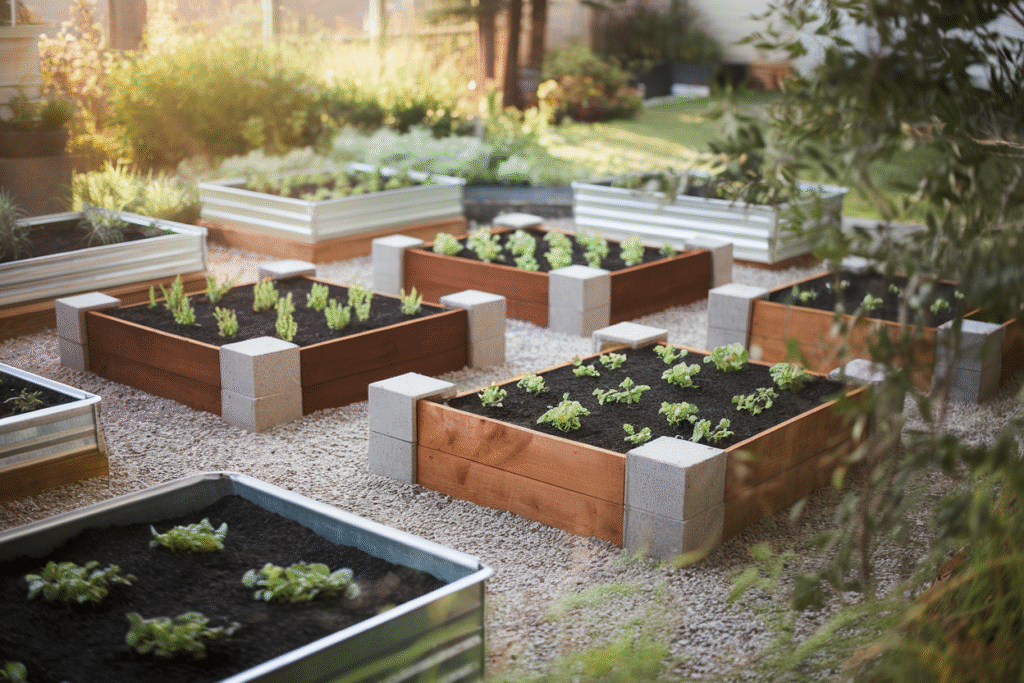Creating DIY raised garden beds using affordable materials is one of the most rewarding ways to upgrade your outdoor space without spending a lot of money. These beds help you grow healthier plants, organize your garden layout, and add natural beauty to your backyard. When you build them yourself, you get full control over size, style, and cost, which makes this project perfect for beginners and seasoned gardeners.
Raised beds have become especially popular in recent years because they blend style, practicality, and sustainability. Whether you have a small balcony or a full backyard, this guide will walk you through how to build stunning raised garden beds using materials that cost far less than store bought options.
Why DIY Raised Garden Beds Using Affordable Materials Is Perfect for 2025
Gardening trends in 2025 are shifting toward creative, eco friendly, budget conscious solutions. People want outdoor spaces that feel natural and personalized. DIY raised garden beds fit this trend perfectly because they give you structure, style, and sustainability at the same time.
Modern outdoor design has also moved toward multi purpose areas where relaxation, function, and aesthetic all work together. Raised beds bring height, depth, and texture to your yard which helps define seating zones, walkways, or small decorative corners. With affordable materials like reclaimed wood, cinder blocks, pallets, and even galvanized tubs, you can build something that feels modern and timeless.
Many homeowners now prefer materials that are low maintenance and environmentally friendly. This makes DIY raised garden beds an excellent choice for 2025 because you can reuse old lumber, repurpose leftover building materials, and reduce waste while still creating something beautiful.
Top Benefits of DIY Raised Garden Beds Using Affordable Materials
Better Soil Control for Healthier Plants
Raised beds give you complete control over the soil quality. You can choose nutrient rich soil that drains well and supports stronger plant growth. For example, if your backyard has clay or rocky soil, a raised bed solves that problem instantly. It also helps prevent soil compaction and gives roots the breathing room they need to thrive.
Easier Maintenance with Less Bending and Kneeling
One of the biggest benefits of raised beds is the comfort they offer. Since the growing area is elevated, you do not have to bend as much when planting, watering, or harvesting. This is perfect for people who want a garden that is easier on the knees and back. Many older gardeners love raised beds because they make gardening more accessible and enjoyable.
Stronger Weed and Pest Control
Raised beds naturally reduce weeds because you are adding fresh soil and lifting the planting area above ground level. You can also line the bottom with weed barrier fabric or cardboard for extra protection. Since the sides act as walls, pests like slugs and beetles are easier to control, and you can install simple barriers around the bed to keep them out.
Custom Design That Fits Any Backyard
DIY raised garden beds using affordable materials let you customize everything. You can build a small square bed for herbs or create long, modern rows for vegetables. You can match the style to your decor whether that is rustic, industrial, bohemian, or minimal. If you live in a small space, you can even build vertical raised beds to maximize growth in tight areas.
Step by Step Guide to DIY Raised Garden Beds Using Affordable Materials
- Choose Your Location
Pick a sunny area that gets at least six to eight hours of light daily. Make sure the ground is fairly level so the bed sits evenly. Avoid placing beds directly under large trees because roots can interfere with plant growth. - Select Your Affordable Materials
You can build raised beds with reclaimed wood, untreated lumber, pallets, cinder blocks, bricks, concrete retaining wall stones, or metal feeding troughs. Choose materials that match your design style and budget. - Measure and Plan the Size
Common sizes are four by eight feet or three by six feet because they allow easy access from all sides. Use a tape measure and sketch your layout so you know exactly what to cut or purchase. - Cut and Assemble the Frame
If using wood, cut your pieces and screw them together into a rectangle. If using cinder blocks or bricks, simply stack them into your chosen shape. For metal beds, position the troughs where you want them. - Prepare the Ground
Remove grass or weeds under the bed. Add cardboard or weed barrier fabric to prevent regrowth. This layer also helps improve moisture retention. - Fill the Bed
Use a mix of garden soil, compost, and organic matter. A common formula is 60 percent soil, 30 percent compost, and 10 percent perlite or sand for drainage. Fill the bed until it is about two inches from the top. - Plant Your Garden
Arrange your plants or seeds based on spacing recommendations. Water the soil well after planting and consider adding mulch to keep moisture in and weeds out.
Designer Tips to Elevate DIY Raised Garden Beds Using Affordable Materials
Use color coordinated plants for a cohesive look. For example, soft greens mixed with lavender or white flowers create a peaceful, Mediterranean inspired space.
Add stone or gravel pathways around your raised beds to give your backyard structure and an intentional layout.
Use solar lighting or pathway lanterns near the beds to make your garden glow in the evening which creates a cozy, inviting atmosphere.
Incorporate vertical elements like trellises, arches, or bamboo stakes to add height and interest. These structures look beautiful and support climbing vegetables or flowers.
Mix materials if you want a modern look. Wood and metal together give a clean and contemporary appearance.
Consider staining or sealing wood to enhance durability and bring out natural grain patterns.
7 Trending Designs in 2025 for DIY Raised Garden Beds Using Affordable Materials
• Reclaimed Wood Rustic Beds
Reclaimed wood is one of those materials that instantly makes a garden feel warm and lived in. When you turn old boards into a raised bed, you get this charming country style look that feels soft and inviting. The natural texture in the wood already tells a little story which makes the whole space feel handcrafted and personal. These rustic beds look beautiful when you surround them with gravel or a few hanging lanterns. It is one of the easiest ways to make your backyard feel cozy without trying too hard.

• Modern Metal Feeding Trough Beds
Metal feeding troughs are becoming a favorite for people who like a clean and modern backyard style. They are simple to set up, very sturdy, and the silver metal looks amazing next to bright green plants. This style brings a fresh, industrial feel to the garden which works really well if you prefer something more minimal and polished. The reflective metal also catches sunlight and makes the whole area feel brighter.
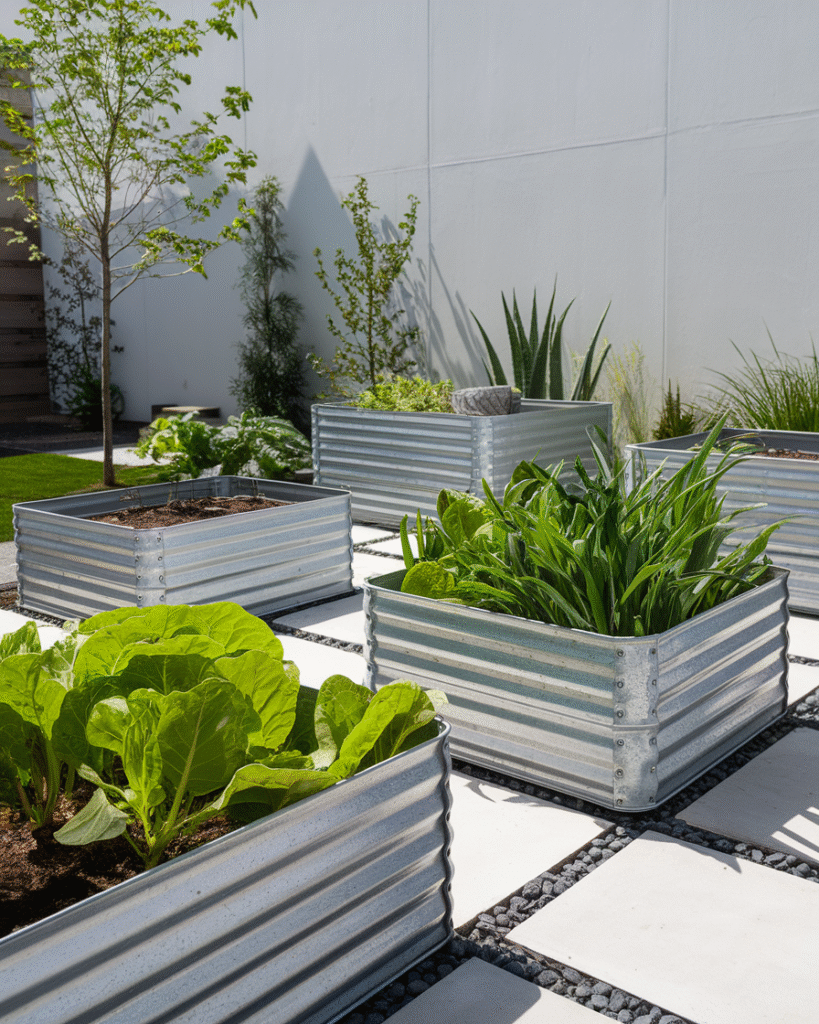
• Cinder Block Raised Beds with Built In Planter Holes
Cinder blocks are surprisingly fun to work with and they are one of the most affordable options you can find. When you stack them into a raised bed shape, the little hollow spaces become perfect mini planters for herbs or flowers. This creates a playful and geometric look which feels both artistic and practical. If you enjoy mixing structure with creativity, this trend fits beautifully.
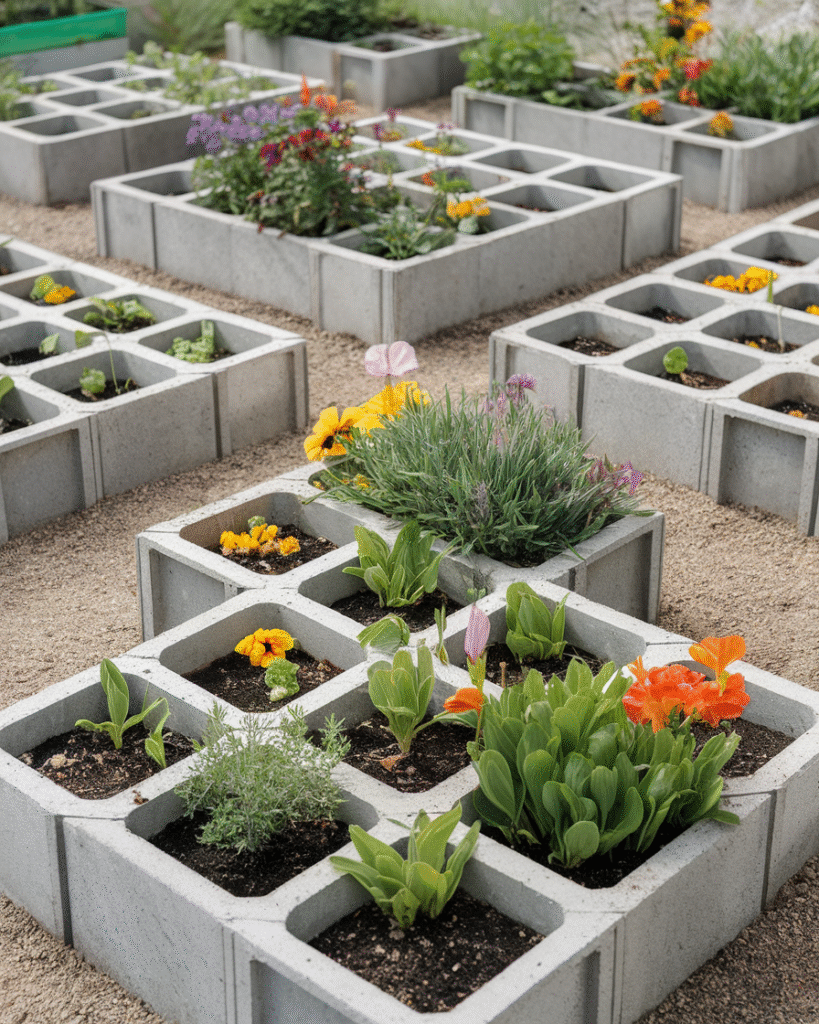
• Pallet Wood Beds for a Sustainable Look
Pallet wood has a soft, natural vibe that works great if you want something simple and eco friendly. When you sand the boards and arrange them neatly, the raised bed looks clean and handcrafted which fits beautifully in cottage style gardens or slower, nature focused spaces. This design is perfect for people who want something sustainable that still feels warm and inviting.
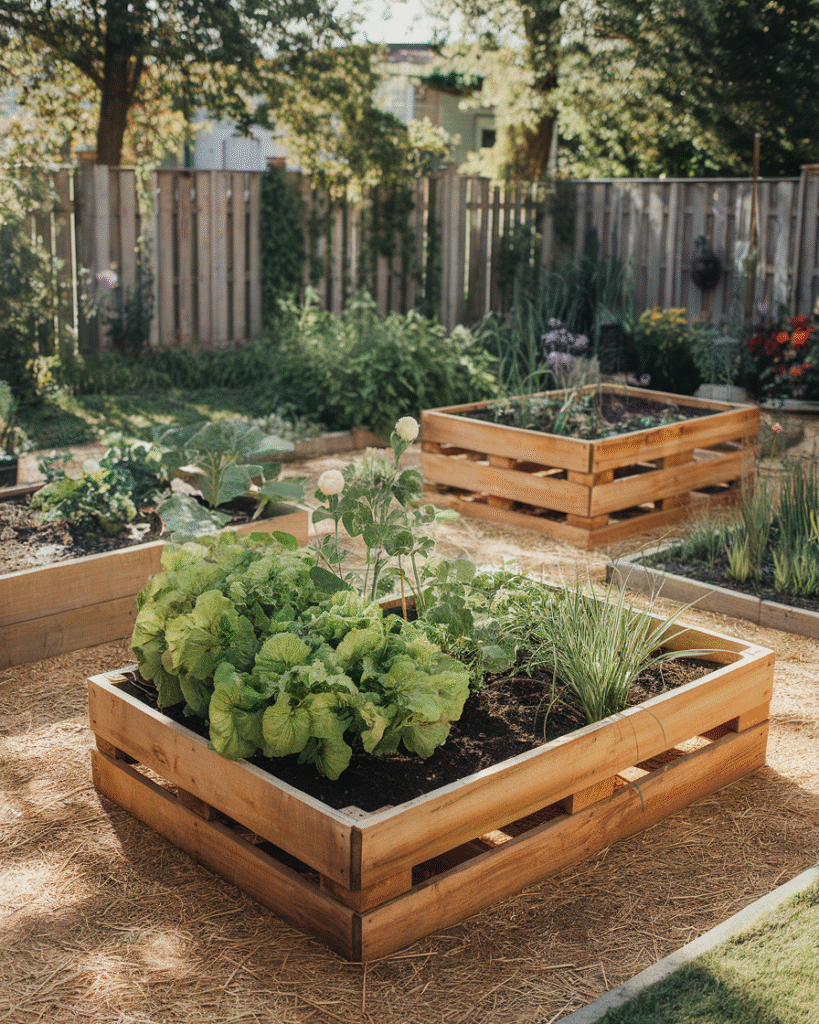
• Vertical Raised Bed Towers for Small Spaces
Vertical raised beds are a lifesaver when you want to grow more but your space is limited. These stacked planters or tower style frames let your plants grow upward which adds a nice bit of height and visual drama. They look great on balconies, patios, or any tight spot where you still want a healthy garden. It is a smart way to turn a small corner into something beautiful and productive.
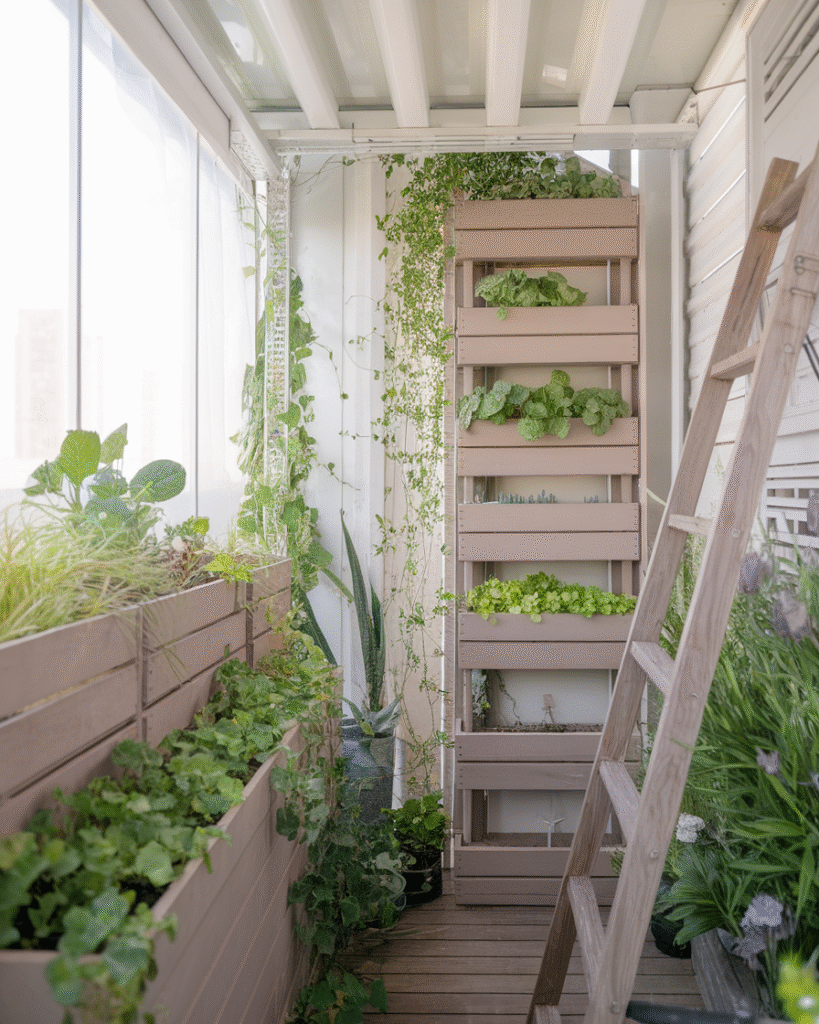
• Brick and Stone Mixed Garden Beds
Brick and stone together create a classic European style garden that never goes out of fashion. The rich earthy colors and textured surfaces add a lot of depth, especially when plants start to spill over the edges. This style feels strong and elegant which makes it great if you want something that lasts a long time and still looks expensive even when you build it on a budget.
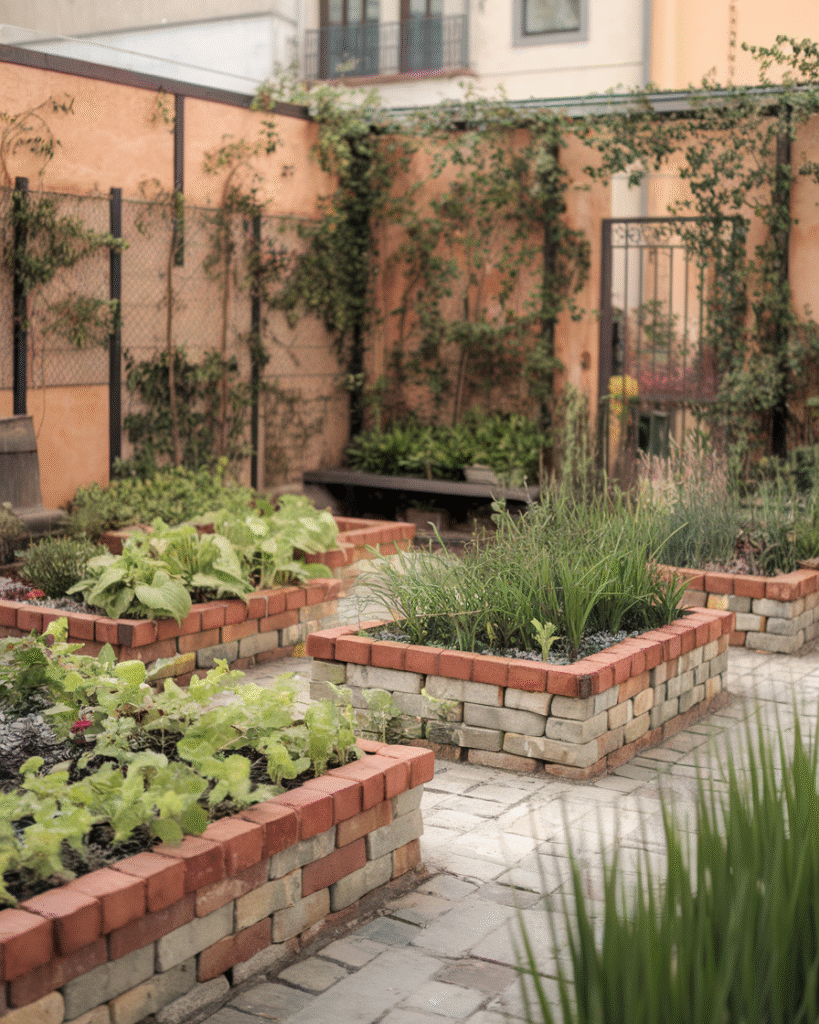
• Boho Style Mixed Material Beds
Boho inspired raised beds mix natural textures in a relaxed way. You might use wood, woven baskets, rope details, or even decorative edging to create a soft and playful look. Wildflowers, climbing vines, and warm lantern lights all fit perfectly with this style. If you want your garden to feel artistic, cozy, and full of personality, this trend fits right in.
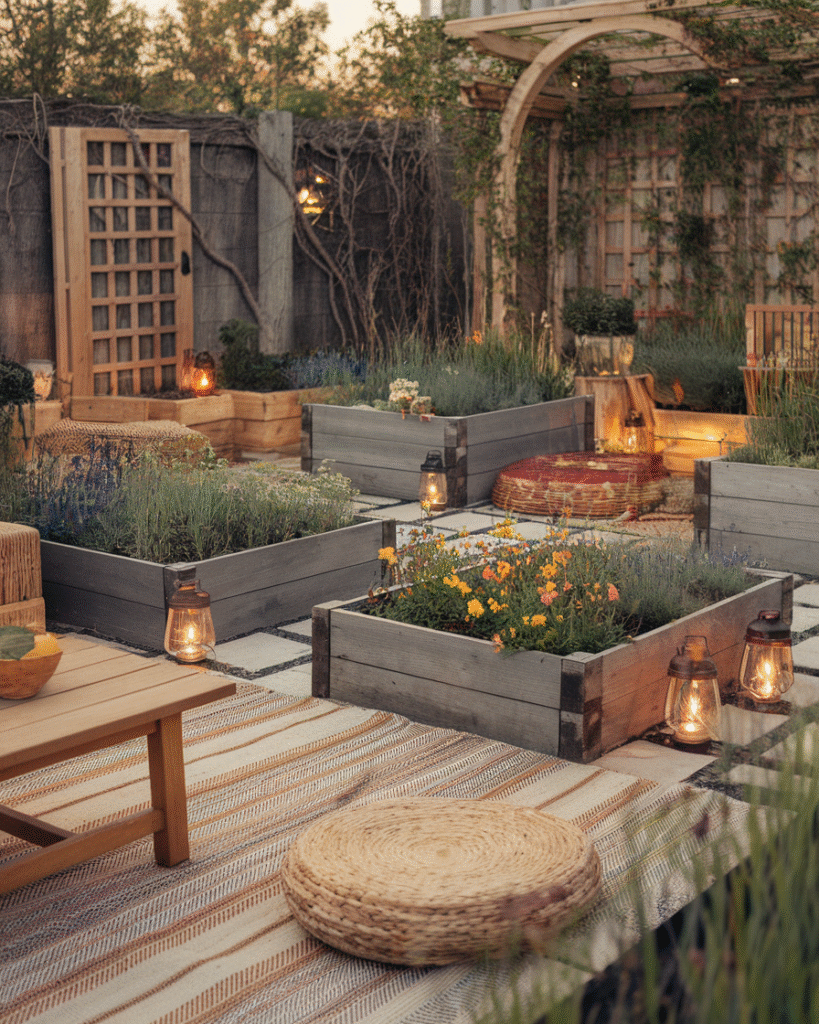
Conclusion: Bringing DIY Raised Garden Beds Using Affordable Materials to Life
Building DIY raised garden beds using affordable materials is one of the most satisfying ways to transform your backyard into a functional and beautiful space. With simple tools and budget friendly supplies, you can create beds that support healthy plant growth while adding style and personality to your outdoor area. The key is choosing materials that fit your home’s aesthetic and designing a layout that brings joy and comfort. Once your beds are in place, you will enjoy a stronger connection to your garden and a deeper appreciation for the plants you grow.
FAQs About DIY Raised Garden Beds Using Affordable Materials
What materials are the cheapest for building raised garden beds?
Some of the most affordable options include pallets, cinder blocks, reclaimed wood, and metal feeding troughs. These materials are budget friendly and easy to find.
How deep should a raised garden bed be?
For most vegetables and flowers, a depth of 10 to 12 inches is ideal. Root vegetables like carrots or potatoes may benefit from 14 to 18 inches.
Do raised beds need a bottom?
Raised beds placed directly on the ground do not need a bottom. If you are placing them on concrete or a balcony, you may want a base with drainage holes.
How long do affordable materials last?
Cinder blocks and bricks can last decades. Pallet wood and reclaimed wood usually last three to six years depending on weather, moisture, and maintenance.
Can I use untreated wood for raised beds?
Yes, untreated wood is safe for growing food. Cedar and redwood last longer, but reclaimed wood and pallets still work well when budget is a priority.

